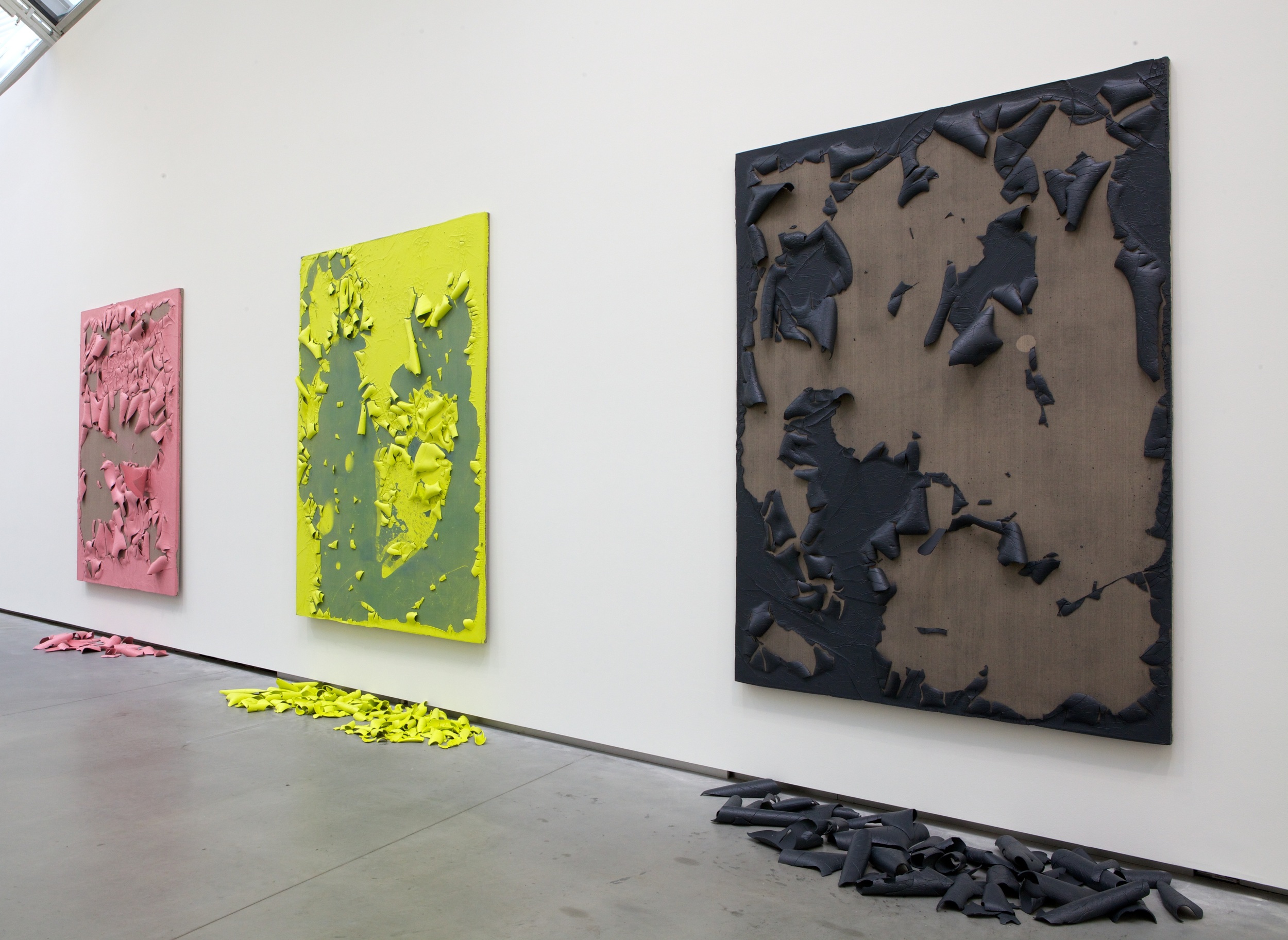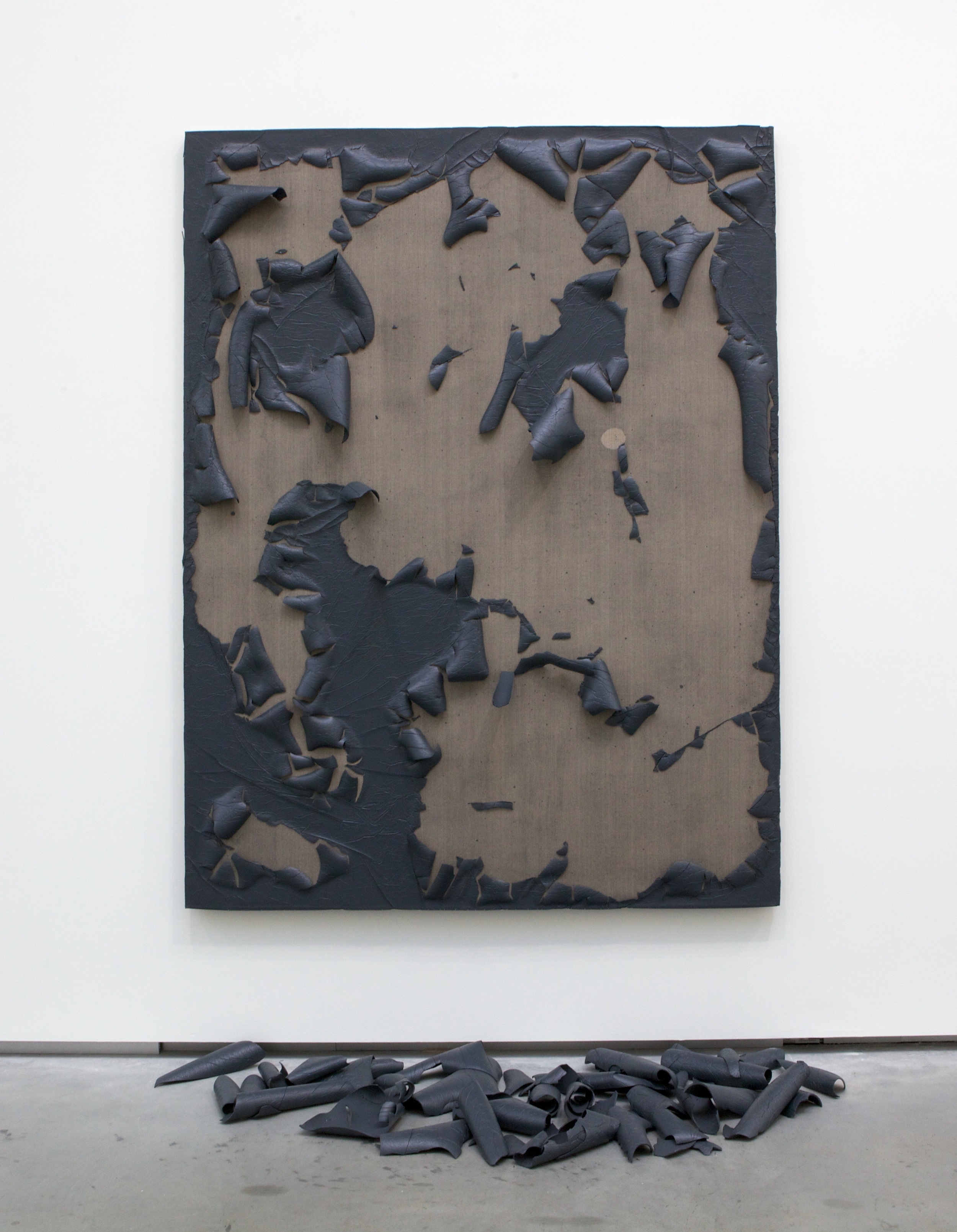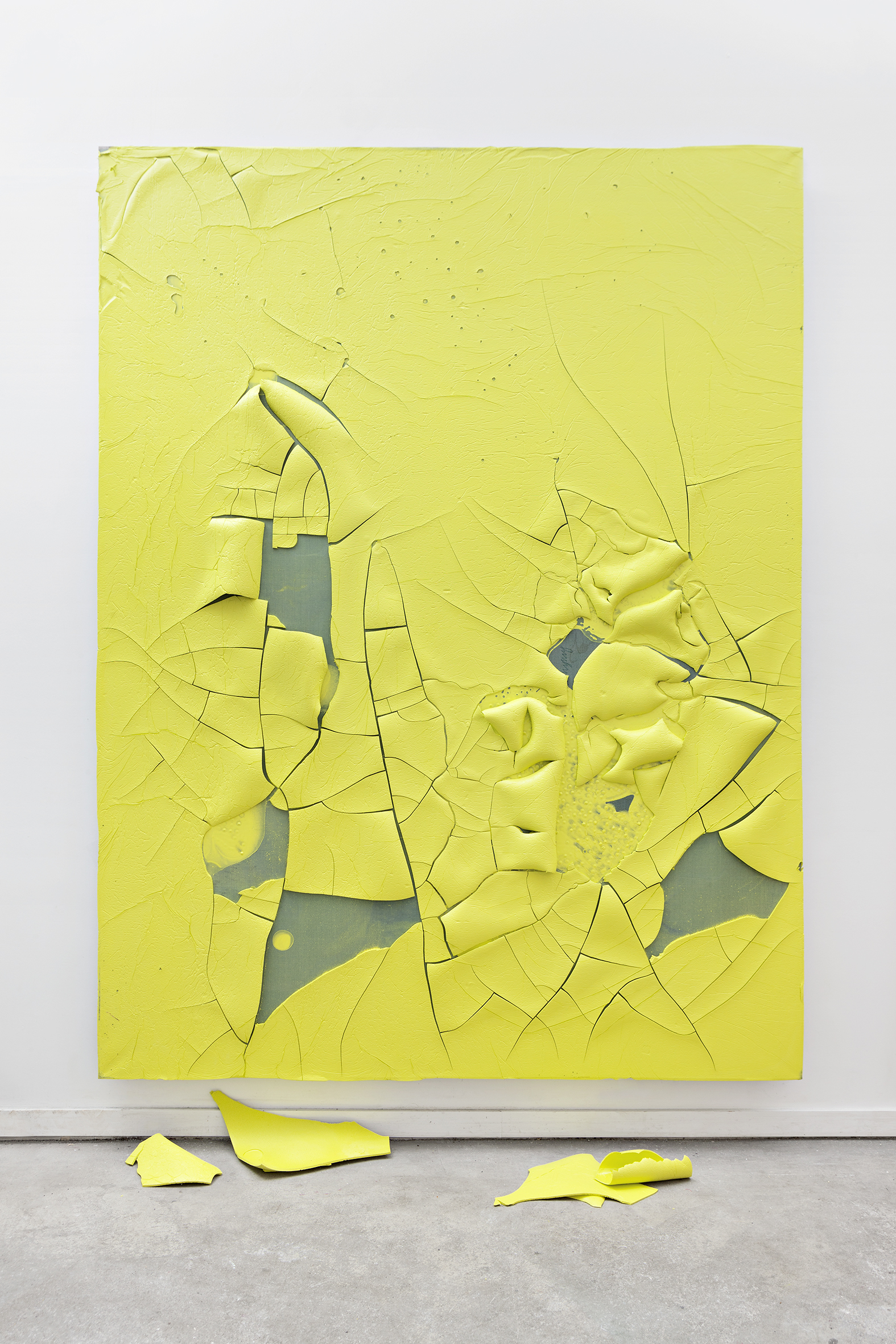Ivan galuzin
Born 1979, Murmansk. Lives and works in Oslo.
Ivan Galuzin’s artistic practice takes shape through media such as painting, sculpture, installation and video. His works in the exhibitionNN-A NN-A NN-A were first shown in his last solo exhibitionIdiosyncrasy Means Allergy at Unge Kunstneres Samfund (UKS) in February-March 2014. Alternating between figuration and abstraction, the show included works that generated a startling dialogue between Galuzin’s peculiar artistic interests and the history of abstract painting. He communicated his conceptual preoccupations through material explorations that were reified into abstract works. His interest in the human body, refuse, decay and organic process of decomposition – leitmotifs in his artistic practice – incited him to exchange traditional oil and acrylic paint with chemicals found in the human body such as calcium, sulphur and phosphorus.
When first created, the works Sick Skin, Anthracite Skin and Hubba Bubba Skin looked like monochrome paintings, but the pungent smell of chemicals warned of something far more dangerous. The canvases had been covered with a layer of industrial two-component paint that created plastic-like and monochrome surfaces in pink, yellow and black. The intense stink of chemicals from the two-component paint triggered strong somatic reactions amongst viewers, plus a sense of decay that soon manifested itself in the paintings’ surfaces: they slowly but surely fractured and started flaking off like dead skin, like a painterly equivalent to the body’s inevitable decay. The works can be read in the context of the history of monochrome painting, which includes works which the Russian Suprematist Aleksander Rodchenko made in 1921. After making these works, Rodchenko declared that ‘It’s all over’. One consequence of the monochrome was to proclaim that painting had reached its end or telos. Like a commentator on the countless proclamations of painting’s death, Galuzin’s deteriorating and rotting works appear as a painterly state of limbo, as an ambiguous warning of total collapse or resurrection.
The extreme process unfolding in these paintings can be situated in both a historical and a contemporary conceptualization of ‘abstraction as destruction’. In Galuzin’s case, he sets the process in motion but it does not remain in his control, for these are self-destructive paintings. Historical references notwithstanding, the artist’s preoccupation with the monochrome is not solely focused on modernistic and formal motifs, or on the illusion of pure and distanced expression. Galuzin’s paintings, rather than receding into abstraction, step forward to confront us. When we see them, the discomfort arising from the industrial paint laced with chemicals could make us feel as though we are being subjected to chemical warfare. Another abstract work exhibited at UKS was painted with a chemical cocktail that would eventually change the work’s white brushstrokes to black. Entitled If This Painting Turns Black, Call the Police, it could be read as a satirical political comment which, tragically enough, has gained even greater actuality in the last year. Through referencing his national background, Galuzin demonstrates his interest in both the social and the political ambitions of the Russian avant-garde’s abstract art, and art’s critical potential in the tense political situation existing in Russia today.
TM





